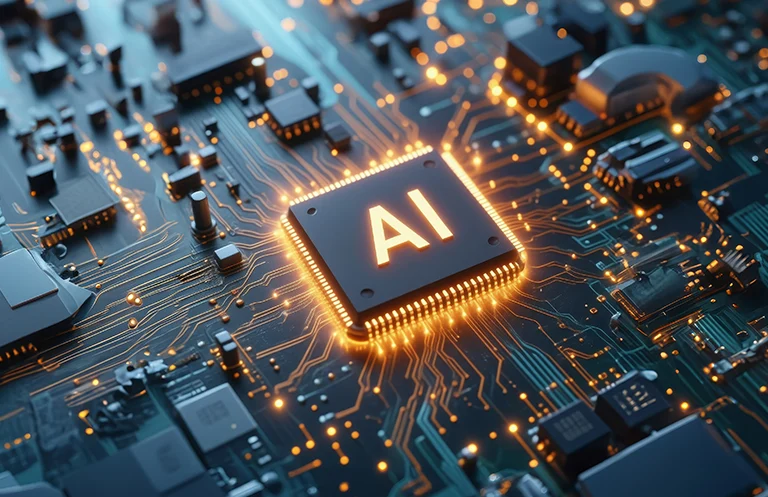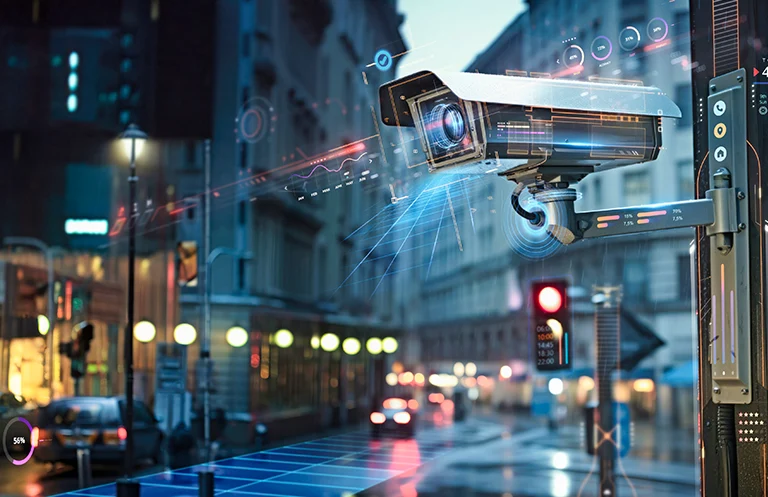Introduction
Despite the slowdown the world suffered due to Covid-19, the Digital Oilfield Market is set to reach $32Bn by 2026, growing at a steady CAGR of ~5.6%. Digitization has changed the complete landscape of the Oil & Gas Industry due to the advancements brought by Industrial Internet of Things also called as IIoT. This industry is adapting IIOT technologies to help improve productivity, efficiency, safety, security while also increasing cost savings.
Components of the Oil & Gas Ecosystem
The Oil & Gas industry, broadly classified as Upstream, Midstream, and Downstream consists of key pieces such as exploration, development & production, refining, transportation, storage, service, and supply. Each of these stages has its challenges but the key challenge in this highly hazardous industry remains to be the safety of workers, machinery, and the environment.
Importance of Safety in Oil & Gas
Types of hazards typical to the Oil and Gas industry are related to explosions & fires, high-pressure line equipment, and electrical/other hazardous energy in addition to other hazards common to all industries such as ergonomic hazards, vehicle collisions, accidents, and machine hazards.
Oil and Gas exploration, processing, transportation, and distribution involve heavy equipment and hazardous materials. Fatality rate in this industry is one of the highest (7 times higher than average workers across industries) and this calls for incredibly careful implementation of measures to minimize, if not eliminate, the safety-related hazards.
There are several types of potential risks in this industry. A few primary ones are listed below
- Vehicle Collisions: Like many other industries, Oil & Gas facilities involve transportation of substantial amounts of highly inflammable material. Any collision during transit can cause a lot of harm to people and property.
- Explosions and Fires: These are the most common and most expensive accidents in the Oil & Gas industry due to the inherent nature of the material & final products.
- Unsafe Manual Labor: One of the key reasons for non-compliance with safety standards resulting in operational hazards and accidents.
- High-Pressure Lines and Equipment: Fluids and gases under high pressure, especially while processing and transporting, need to be handled with utmost care. Any accidental leaks can be fatal. Hence, technologies for safety and continuous monitoring play a significant role.
- Electrical and Other Hazardous Energy: The safety of workers and the facility can be compromised due to exposure to uncontrolled mechanical, electrical, hydraulic, and other hazardous energy sources.
- Machine Hazards: Serious accidents can be caused due to improper design/installation or maintenance of machines and non-compliance with safety standards.
Transportation Safety in Oil and Gas, Which Is Critical and Specific to This Industry
Oil & Gas Transportation modes: There are multiple modes of transportation for Oil and Gas of which trucks, ships, rails, and pipelines are the most predominant ones. Each comes with corresponding associated risks such as transportation accidents, a risk to marine life/environment, and spills; risks outweigh the value in most modes.
By far the safest mode of transport for the industry has been pipelines. Pipelines transport tens of millions of barrels of Oil/Gas over long distances every day, with much fewer incidents, injuries, and fatalities vis-à-vis other modes.
Advancements In Digital Technology Make It Even Safer To Transport Oil & Gas Through Remote Pipelines.
- Pipeline design guidelines: A lot of safety-focused technological research has been conducted and sophisticated pipeline safety programs have been put in place by the PHMSA (Pipeline and Hazardous Materials Safety Administration) and other similar organizations to lay down best practices.
- Realtime detection of spills/leaks: Smart flow sensors and micro leak detection systems, satellite-based leak detection or magnetic field, and other technologies have been implemented to detect leaks and remotely shut off flow in some cases.
However, as they say, prevention is better than cure and by far the most superior solutions have been devised for the preventive maintenance of pipelines to avoid leaks and spills.
A couple of examples for the same are as follows
- Predictive maintenance & non-destructive remote testing of pipelines:
- By simulating the exact behavior of field assets using the data captured by sensors, we can predict the response/behavior of the machinery based on various anticipated process parameters and conditions. This helps the industry stay on top of their machine maintenance proactively. For instance, in the case of transportation of highly inflammable and quite expensive liquids and gaseous materials over long distances, predictive maintenance solutions may predict the leakage, accidents, or corrosion/failure of pipelines.
- In addition to the above, certain solutions such as ultrasound/vision-based sensors carried by robotic crawlers over long distances detect any anomalies or surface aberrations and report back remotely over wireless connectivity. This saves a large amount of time and costs in manual inspections of the pipelines in remote fields, zeroes in on exact locations of the faults and the types of repairs required.
- Also, there are meters designed for getting the accuracy and cost-effectiveness of mass flow measurement of steam in the pipeline. Variations in data provided by these meters generate alerts about the defects, if any, in the pipeline.
Conclusion
In a nutshell, various technologies such as robotics, vision and ultrasound-based analytics, and the Internet of Things, are being leveraged by experts in the industry to make O&G transportation a much more reliable and safe operation.
eInfochips has a rich history of helping customers in the Oil & Gas industry with solutions enabling safety. Some of these include Expensive Field Asset Monitoring, Collision Awareness System, Gas Leak Detection System, Robotic Crawler for NDPT, and Predictive Analytics











